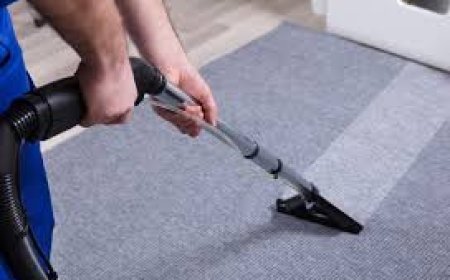Turning the Wheels of Precision: A Comprehensive Guide to Lathe Parts
Lathe parts machines are indispensable tools in the manufacturing industry, enabling the production of various components with precise dimensions
Lathe parts machines are indispensable tools in the manufacturing industry, enabling the production of various components with precise dimensions and intricate designs. Understanding the different parts of a lathe and their functions is essential for anyone working with or interested in this versatile machining tool. This comprehensive guide will take you through the key lathe parts, explaining their roles and highlighting their importance in the turning process.
-
Bed:
The bed is the foundation of a lathe parts and provides a rigid and stable base for all the other components. It is usually made of cast iron or steel and supports the headstock, tailstock, carriage, and other moving parts. The bed's quality and design significantly impact the machine's stability and accuracy. -
Headstock:
The headstock houses the main spindle, which holds the workpiece during turning operations. It contains various critical components, including the spindle bearings, pulleys, and gears. The headstock's primary function is to provide rotational motion to the workpiece with controlled speed and power. -
Tailstock:
The tailstock is located at the opposite end of the lathe bed from the headstock. It typically consists of a movable spindle, quill, and handwheel. The tailstock provides support to the workpiece, especially for long or slender components. It can be adjusted along the bed's length and locked in position to prevent movement during machining. -
Carriage:
The carriage is a crucial component that moves along the lathe bed and holds the cutting tools. It consists of several parts:
a. Saddle: The saddle is mounted on the lathe bed and provides support to the cross-slide and compound rest. It moves longitudinally along the bed's length, allowing for the positioning of the cutting tools.
b. Cross-slide: The cross-slide is mounted on the saddle and moves perpendicular to the lathe bed. It carries the tool post, which holds the cutting tool. The cross-slide enables precise lateral movement for facing, turning, and other operations.
c. Compound Rest: The compound rest is mounted on the cross-slide and provides additional movement for the cutting tool. It allows for angular adjustments, making it possible to perform taper turning and thread cutting.
- Chuck and Faceplate:
The chuck and faceplate are used to secure the workpiece during machining operations:
a. Chuck: A chuck is a specialized device that holds the workpiece firmly in place. It comes in various types, such as three-jaw, four-jaw, and collet chucks, offering versatility for different workpiece shapes and sizes. Chucks enable efficient and accurate rotation of the workpiece.
b. Faceplate: A faceplate is a flat, circular plate attached to the spindle nose. It is used to hold irregularly shaped or oversized workpieces that cannot be accommodated by a chuck. The workpiece is bolted or clamped onto the faceplate, providing stability during machining.
-
Tool Post and Tool Holders:
The tool post is mounted on the carriage and holds the cutting tools. It allows for quick and easy tool changes. Different types of tool holders, such as turning, facing, boring, and threading holders, can be attached to the tool post. Tool holders secure the cutting tools in place and provide the necessary rigidity and stability during machining. -
Apron and Feed Mechanism:
The apron is located on the front side of the carriage and contains the feed mechanism. It consists of various components:
a. Feed Rod: The feed rod transmits motion from the lead screw to the carriage, enabling longitudinal feed movement during turning operations. It is usually equipped with different feed rates to control the cutting speed.
b. Lead Screw: The lead screw is a threaded rod that engages with the carriage's nut. It converts rotary motion into linear motion, allowing for precise thread cutting operations.
c. Half Nut Lever: The half nut lever engages or disengages the carriage's half nuts with the lead screw, enabling or disabling the automatic feed.
Conclusion:
Understanding the various lathe parts and their functions is crucial for anyone involved in machining operations. The bed, headstock, tailstock, carriage, chuck, tool post, and feed mechanism are fundamental components that facilitate precise turning operations. By familiarizing yourself with these parts and their roles outlined in this guide, you can gain a deeper appreciation for the intricate workings of a lathe machine and enhance your ability to utilize it effectively in various manufacturing applications.
What's Your Reaction?
 Like
0
Like
0
 Dislike
0
Dislike
0
 Love
0
Love
0
 Funny
0
Funny
0
 Angry
0
Angry
0
 Sad
0
Sad
0
 Wow
0
Wow
0


















































